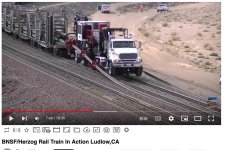First of all I want to thank everyone who made comments on my thread. Lots of opinions and ideas.
I think I might have made a mistake by calling it a bridge that I am wanting to build, rather than a low water crossing. Some suggested that I should build a bridge, and they’re probably right but I don’t think I can afford one. If I knew how much weight a concrete pad could support spanning 6,8 or 10 feet, I might give it a lot more thought.
Many comments were about the 36” culverts not being large enough & would get blown out. I certainly wouldn’t be able to handle that. My thoughts are if the crossing has an 18-24” deep concrete footing (ring foundation) around it, concrete completely surrounding both culverts (packed on the lower sides so there are no voids), a ‘dip’ in the middle, and a 6” pad, the water could flow over the crossing (after heavy rains) without compromising the integrity of the crossing. The culverts would help with the water passing as the creek goes down and we would be able to cross it sooner. Emergency Services, Home Health Providers and the pizza delivery guy could get to us sooner. ( I’m joking about the pizza delivery guy. The nearest pizza place, that delivers, is 40 miles from us.)
Many folks noticed that our driveway is not perpendicular to the running water. With the way the creek runs now, much of the water is directed down the driveway, before it hits a bank and turns downstream.We plan to hire a dozer to take out a coupe ‘twist & turns’ to correct that and to clean out a lot a materials that have filled in the crossing. From the high spot on each bank of the crossing the creek bed only drops about two feet and I think that’s one of the reasons the the water spreads out so much.I think I need to have it deeper on each side of the crossing, say 4 or 5 feet upstream and downstream.
The dozer can push the gravel & rock to shore up the creek banks. Rip rap could be added later as long as we make a crossing that can handle the weight and get the trucks across.
My big question now is, will my crossing & culverts get washed away, when it’s surrounded by 40 tons of packed 3/4” minus gravel and 20 yds of concrete.
My last question is, who wants to grab a shovel and join the fun if the project is a go?
TIA
Gary
